Research on Accelerating Single-Frequency Precise Point Positioning Convergence with Atmospheric Constraint
Abstract
1. Introduction
2. Methods
2.1. GPS PPP Observation Models
2.1.1. Standard Single-frequency GPS PPP Observation Model
2.1.2. Troposphere-Constrained Single-Frequency GPS PPP Observation Model
2.1.3. Ionosphere-Constrained Single-Frequency GPS PPP Observation Model
2.1.4. Troposphere- and Ionosphere-Constrained Single-Frequency GPS PPP Observation Model
2.2. Different Interpolation Methods for GIM Products
2.2.1. Junkins Weighted Interpolation
2.2.2. Bicubic Interpolation
3. Experimental Data Set and Analysis
3.1. The Effect of Interpolation Method on Ionosphere-constrained GPS Single-frequency PPP
3.2. Single-Frequency PPP with the Constraints
4. Conclusions
Author Contributions
Funding
Acknowledgments
Conflicts of Interest
References
- Zumberge, J.; Heflin, M.; Jefferson, D.; Watkins, M.; Webb, F. Precise point positioning for the efficient and robust analysis of GPS data from large network. J. Geophys. Res. 1997, 102, 5005–5017. [Google Scholar] [CrossRef]
- Kouba, J.; Héroux, P. Precise point positioning using IGS orbit and clock products. GPS Solut. 2001, 5, 12–28. [Google Scholar] [CrossRef]
- Zhang, X.H.; Andersen, O.B. Surface ice flow velocity and tide retrieval of the Amery ice shelf using precise point positioning. J. Geod. 2006, 80, 171–176. [Google Scholar] [CrossRef]
- Choy, S.; Bisnath, S.; Rizos, C. Uncovering common misconceptions in GNSS Precise Point Positioning and its future prospect. GPS Solut. 2017, 21, 13–22. [Google Scholar] [CrossRef]
- Bisnath, S.; Gao, Y. Current state of Precise Point Positioning and future prospects and limitations. In Observing Our Changing Earth, Proceedings of the International Association of Geodesy Symposia, Perugia, Italy, 2–13 July 2007; Springer Link: Berlin, Heidelberg, 2009; Volume 133, pp. 615–624. [Google Scholar]
- Marques, H.A.; Monico, J.F.G.; Aquino, M. RINEX_HO: Second- and third-order ionospheric corrections for RINEX observation files. GPS Solut. 2011, 15, 305–314. [Google Scholar] [CrossRef]
- Banville, S.; Sieradzki, R.; Hoque, M.; Wezka, K.; Hadas, T. On the estimation of higher-order ionospheric effects in precise point positioning. GPS Solut. 2017, 21, 1817–1828. [Google Scholar] [CrossRef]
- Odijk, D.; Zhang, B.C.; Khodabandeh, A.; Odolinski, R.; Teunissen, P.J.G. On the estimability of parameters in undifferenced, uncombined GNSS network and PPP-RTK user models by means of S-system theory. J. Geod. 2016, 90, 15–44. [Google Scholar] [CrossRef]
- Rovira-Garcia, A.; Juan, J.M.; Sanz, J.; Gonzalez-Casado, G.; Ibanez, D. Accuracy of ionospheric models used in GNSS and SBAS: Methodology and analysis. J. Geod. 2016, 90, 229–240. [Google Scholar] [CrossRef]
- Shi, C.; Gu, S.F.; Lou, Y.D.; Ge, M.R. An improved approach to model ionospheric delays for single-frequency precise point positioning. Adv. Space Res. 2012, 49, 1698–1708. [Google Scholar] [CrossRef]
- Lou, Y.D.; Zheng, F.; Gu, S.F.; Wang, C.; Guo, H.L.; Feng, Y.M. Multi-GNSS precise point positioning with raw single-frequency and dual-frequency measurement models. GPS Solut. 2016, 20, 849–862. [Google Scholar] [CrossRef]
- Abd Rabbou, M.; El-Shazly, A.; Ahmed, K. Comparative analysis of multi-constellation GNSS single-frequency precise point positioning. Surv. Rev. 2018, 50, 373–382. [Google Scholar] [CrossRef]
- Choy, S.; Silcock, D. Single frequency ionosphere-free precise point positioning: A cross-correlation problem? J. Geod. Sci. 2011, 1, 314–323. [Google Scholar] [CrossRef]
- Heroux, P.; Gao, Y.; Kouba, J.; Lahaye, F.; Mireault, Y.; Collins, P.; Macleod, K.; Tetreault, P.; Chen, K. Products and applications for precise point positioning-Moving towards real-time. In Proceedings of the ION GNSS 2004, Long Beach, CA, USA, 21–24 September 2004. [Google Scholar]
- Hernandez-Pajares, M.; Juan, J.M.; Sanz, J.; Orus, R.; Garcia-Rigo, A.; Feltens, J.; Komjathy, A.; Schaer, S.C.; Krankowski, A. The IGS VTEC maps: A reliable source of ionospheric information since 1998. J. Geod. 2009, 83, 263–275. [Google Scholar] [CrossRef]
- Liu, A.; Wang, N.B.; Li, Z.S.; Zhou, K.; Yuan, H. Validation of CAS’s final global ionospheric maps during different geomagnetic activities from 2015 to 2017. Results Phys. 2018, 10, 481–486. [Google Scholar] [CrossRef]
- Brunini, C.; Van Zele, M.A.; Meza, A.; Gende, M. Quiet and perturbed ionospheric representation according to the electron content from GPS signals. J. Geophys. Res. Space Phys. 2003, 108, 1056. [Google Scholar] [CrossRef]
- Bakry El-Arini, M.; Conker, R.S.; Albertson, T.W.; Reagan, J.K.; Klobuchar, J.A.; Doherty, P.H. Comparison of real-time ionospheric algorithms for a GPS Wide-Area Augmentation System (WAAS). Navigation 1994, 41, 393–414. [Google Scholar] [CrossRef]
- Chao, Y. Real Time Implementation of the Wide Area Augmentation System for the Global Positioning System with an Emphasis on Ionospheric Modeling. Ph.D. Thesis, Stanford University, Stanford, CA, USA, 1997. [Google Scholar]
- Orus, R.; Hernandez-Pajares, M.; Juan, J.M.; Sanz, J. Improvement of global ionospheric VTEC maps by using kriging interpolation technique. J. Atmos. Sol. Terres. Phys. 2005, 67, 1598–1609. [Google Scholar] [CrossRef]
- Lanyi, G.E.; Roth, T. A comparison of mapped and measured total ionospheric electron content using Global Positioning System and beacon satellite observations. Radio Sci. 1988, 23, 483–492. [Google Scholar] [CrossRef]
- Arikan, F.; Nayir, H.; Sezen, U.; Arikan, O. Estimation of single station interfrequency receiver bias using GPS-TEC. Radio Sci. 2008, 43, RS4004. [Google Scholar] [CrossRef]
- Lu, W.J.; Ma, G.Y.; Wang, X.L.; Wan, Q.T.; Li, J.H. Evaluation of ionospheric height assumption for single station GPS-TEC derivation. Adv. Space Res. 2017, 60, 286–294. [Google Scholar] [CrossRef]
- Kao, S.; Tu, Y.; Chen, W.; Weng, D.J.; Ji, S.Y. Factors affecting the estimation of GPS receiver instrumental bias. Surv. Rev. 2013, 44, 59–67. [Google Scholar] [CrossRef]
- Chen, J.; Huang, L.K.; Liu, L.L.; Wu, P.T.; Qin, X.Y. Applicability analysis of VTEC derived from the sophisticated Klobuchar model in China. ISPRS Int. J. Geo. Inf. 2017, 6, 75. [Google Scholar] [CrossRef]
- Liu, X.F.; Yuan, Y.B.; Tan, B.F.; Li, M. Observational analysis of variation characteristics of GPS-based TEC fluctuation over China. ISPRS Int. J. Geo. Inf. 2016, 5, 237. [Google Scholar] [CrossRef]
- Niell, A.E. Global mapping functions for the atmosphere delay at radio wavelengths. J. Geophys. Res. 1996, 101, 3227–3246. [Google Scholar] [CrossRef]
- Boehm, J.; Moller, G.; Schindelegger, M.; Pain, G.; Weber, R. Development of an improved empirical model for slant delays in the troposphere (GPT2w). GPS Solut. 2006, 19, 433–441. [Google Scholar] [CrossRef]
- Niell, A.E. Preliminary evaluation of atmospheric mapping functions based on numerical weather models. Phys. Chem. Earth 2001, 26, 475–480. [Google Scholar] [CrossRef]
- Huang, L.K.; Xie, S.F.; Liu, L.L.; Li, J.Y.; Chen, J.; Kang, C.L. SSIEGNOS: A new Asian single site tropospheric correction model. ISPRS Int. J. Geo. Inf. 2017, 6, 20. [Google Scholar] [CrossRef]
- Zhang, L.; Yao, Y.B.; Peng, W.J.; Shan, L.L.; He, Y.L.; Kong, J. Real-time global ionospheric map and its application in single-frequency positioning. Sensors 2019, 19, 1138. [Google Scholar] [CrossRef]
- Aggrey, J.; Bisnath, S. Improving GNSS PPP convergence: The case of atmospheric-constrained, multi-GNSS PPP-AR. Sensors 2019, 19, 587. [Google Scholar] [CrossRef]
- Gao, Z.Z.; Shen, W.B.; Zhang, H.P.; Niu, X.J.; Ge, M.R. Real-time kinematic positioning of INS tightly aided multi-GNSS ionospheric constrained PPP. Sci. Rep. 2016, 6, 30488. [Google Scholar] [CrossRef]
- Zhou, F.; Dong, D.N.; Ge, M.R.; Li, P.; Wickert, J.; Schuh, H. Simultaneous estimation of GLONASS pseudorange inter-frequency biases in precise point positioning using undifferenced and uncombined observations. GPS Solut. 2018, 22, 19. [Google Scholar] [CrossRef]
- Zhou, F.; Dong, D.N.; Li, W.W.; Jiang, X.Y.; Wickert, J.; Schuh, H. GAMP: An open-source software of multi-GNSS precise point positioning using undifferenced and uncombined observations. GPS Solut. 2018, 22, 33. [Google Scholar] [CrossRef]
- Jayapal, V.; Zain, A.F.M. Interpolation and extrapolation techniques based neural network in estimating the missing ionospheric TEC data. In Proceedings of the Progress in Electromagnetic Research Symposium (PIERS), Shanghai, China, 9–11 August 2016; pp. 695–699. [Google Scholar]
- Pang, Z.; Tan, H.; Chen, D. An Improved Low-cost Adaptive Bicubic Interpolation Arithmetic and VLSI Implementation. Acta Autom. Sin. 2013, 39, 407–417. [Google Scholar] [CrossRef]
- Keys, R.G. Cubic convolution interpolation for digital image processing. IEEE Trans. Acoust. Speech Signal Process. 1981, 29, 1153–1160. [Google Scholar] [CrossRef]
- Dach, R.; Hugentobler, U.; Fridez, P.; Meindl, M. Bernese GPS Software Version 5.0; Astronomical Institute, University of Bern: Bern, Switzerland, 2007. [Google Scholar]
- Yun, D.H.; Kee, C. Single-frequency differential GPS accuracy improvement via local area ionospheric time delay model development. Telecommun. Rev. 1999, 9, 33–49. [Google Scholar]
- Lwano, S.; Fukuda, Y.; Sato, T.; Tamura, Y.; Matsumoto, K.; Shibuya, K. Long-period tidal factors at Antarctica Syowa Station determined from 10 years of superconducting gravimeter data. J. Geophys. Res. Solid Earth 2005, 110, B10403. [Google Scholar]
- Bidikar, B.; Rao, G.S.; Ganesh, L. Sagnac effect and SET error based pseudorange modeling for GPS applications. In Proceedings of the Fourth International Conference on Recent Trends in Computer Science & Engineering (ICRTCSE 2016), Chennai, India, 29–30 April 2016; Volume 87, pp. 172–177. [Google Scholar]
- Han, C.H.; Cai, Z.W. Relativistic effects to the onboard BeiDou satellite clocks. Navig. J. Inst. Navig. 2019, 66, 49–53. [Google Scholar] [CrossRef]
- Cai, C.S.; Gong, Y.Z.; Gao, Y.; Kuang, C.L. An approach to speed up single-frequency PPP convergence with quad-constellation GNSS and GIM. Sensors 2017, 17, 1302. [Google Scholar] [CrossRef]
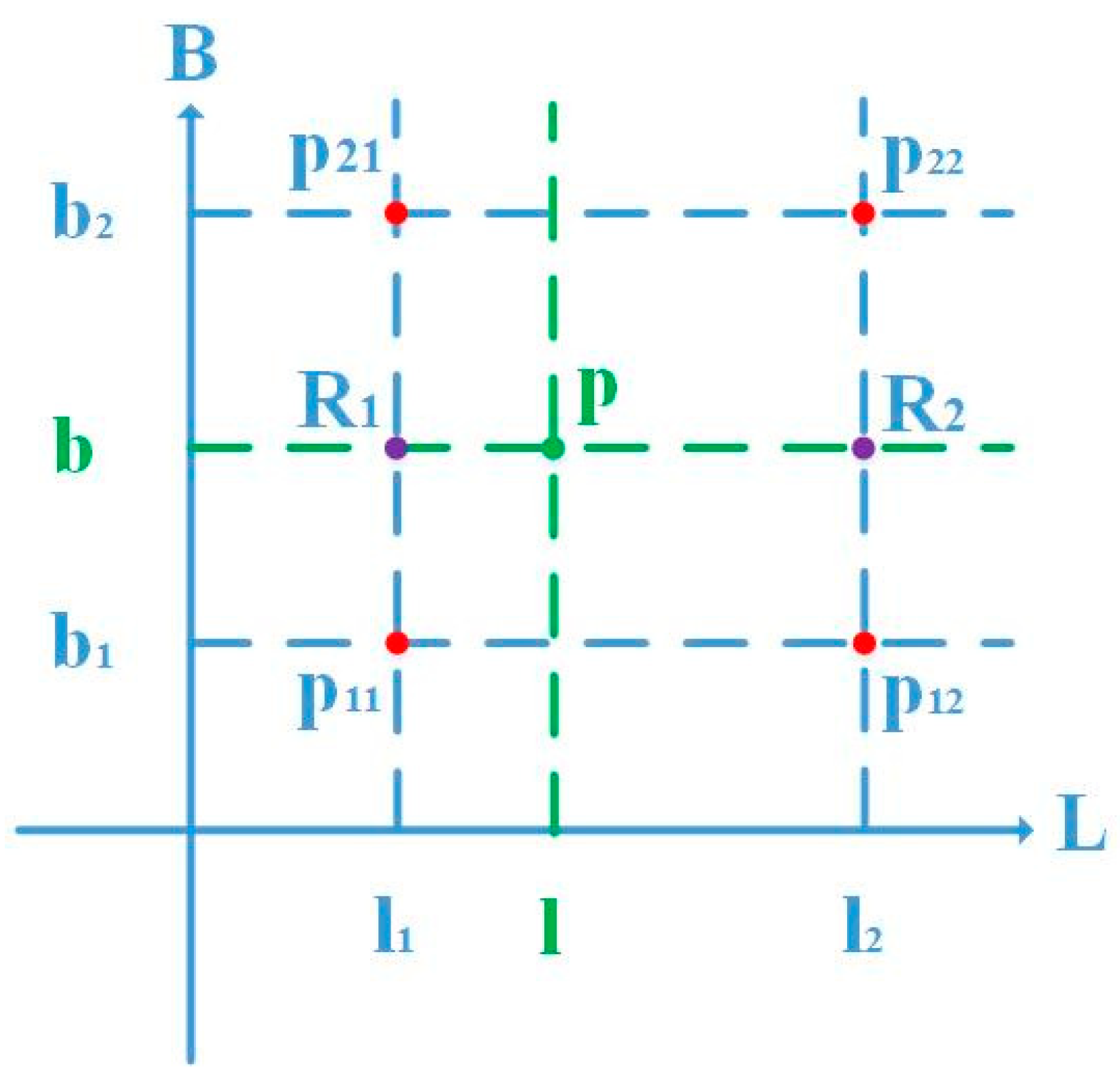

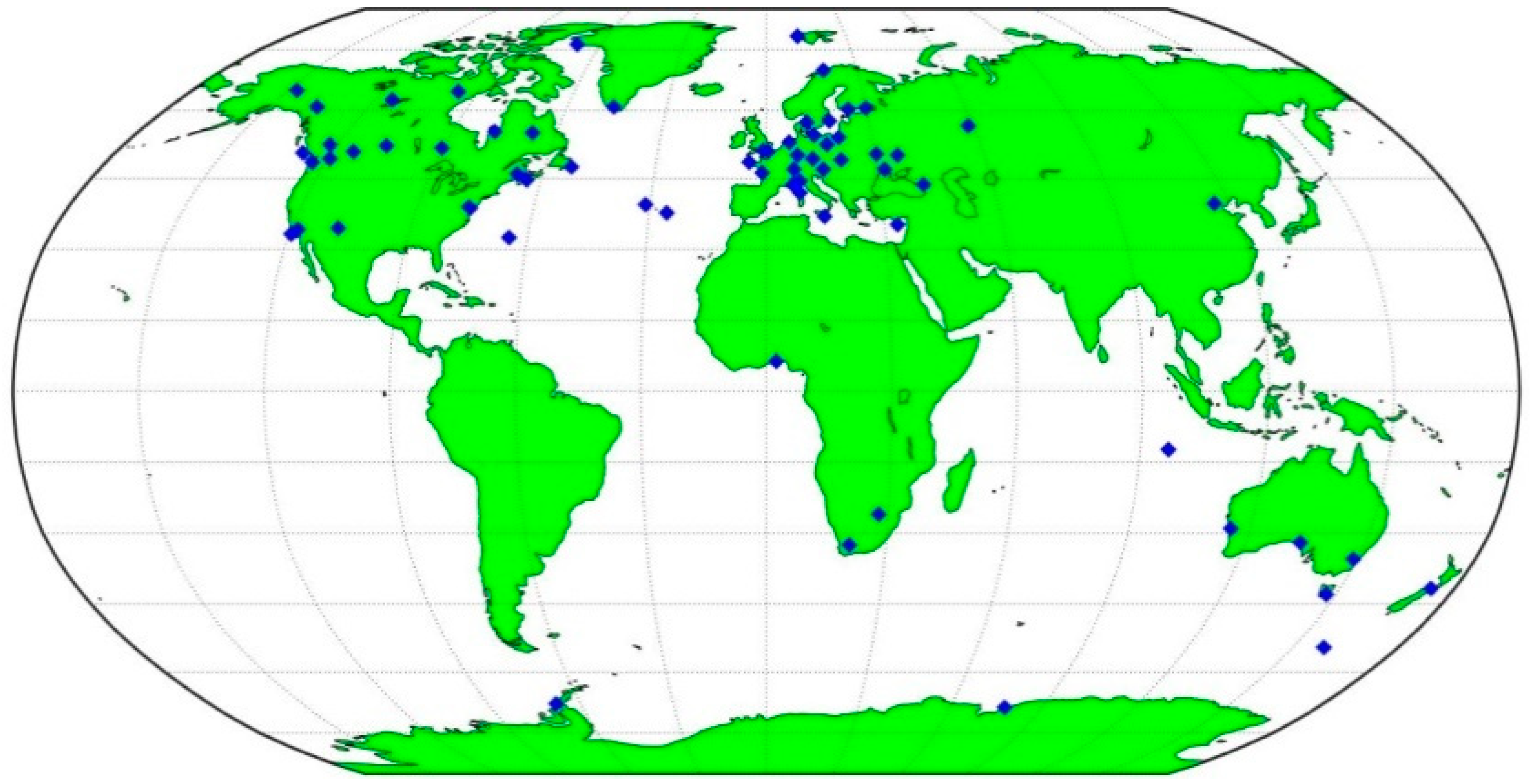
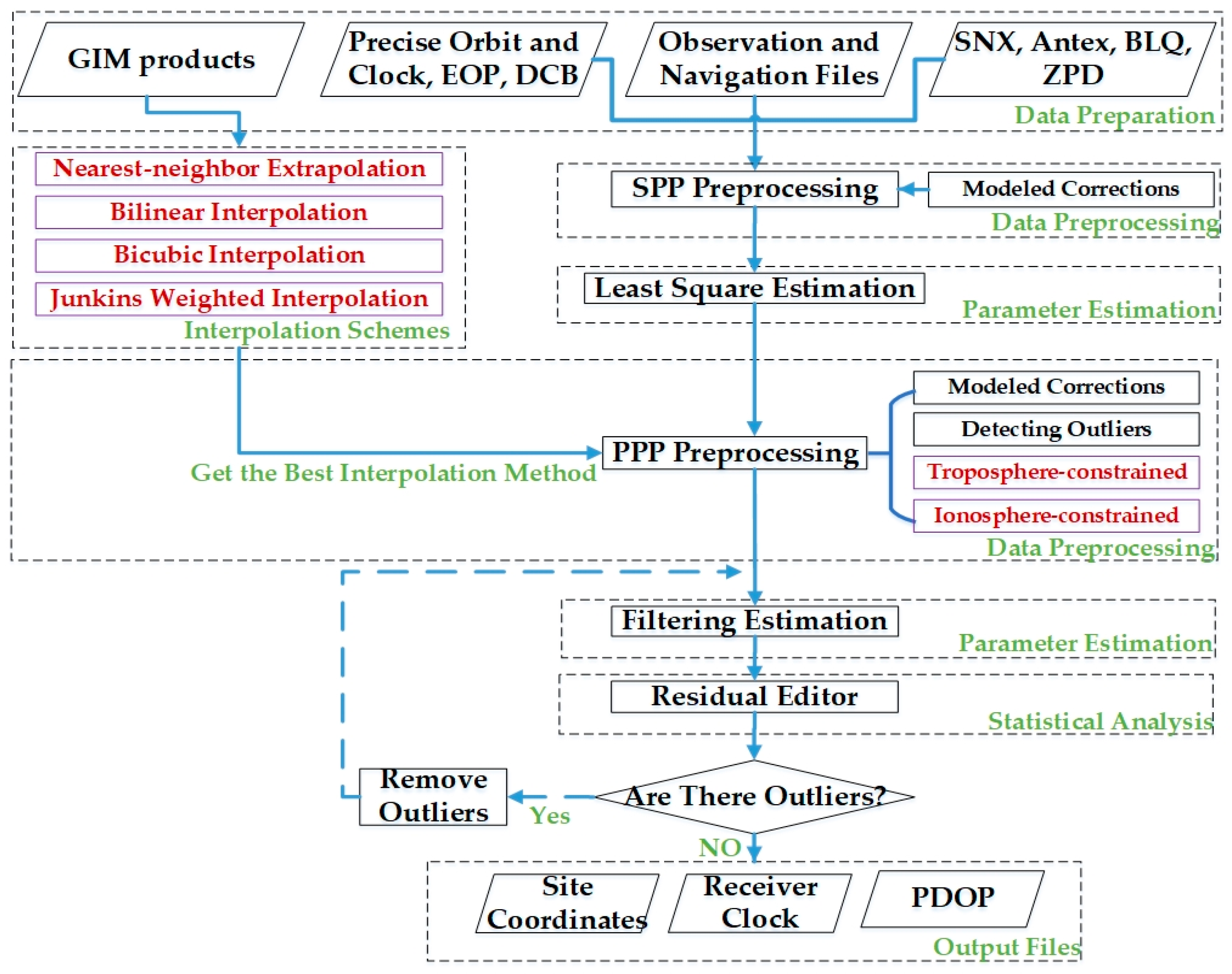
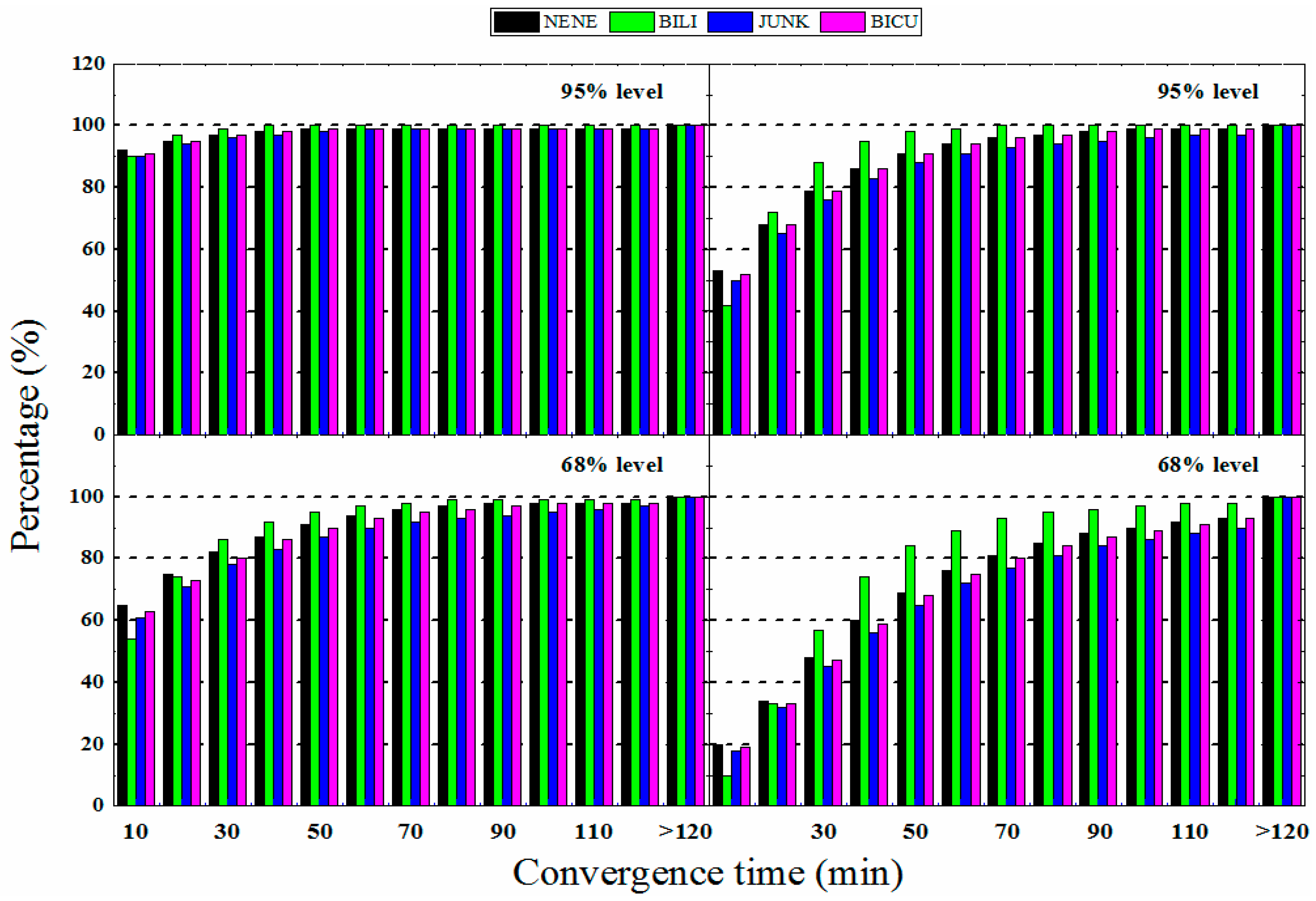
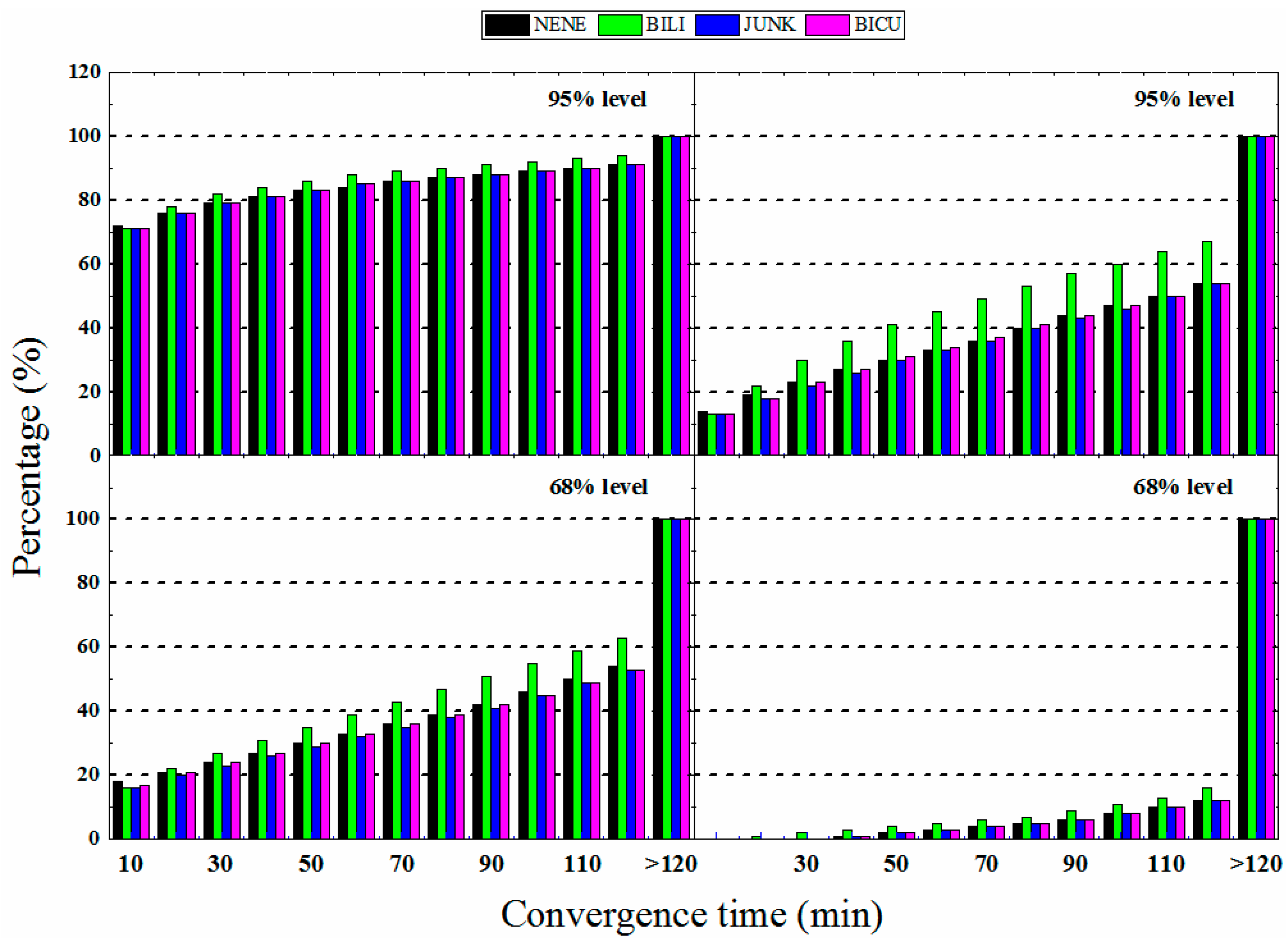

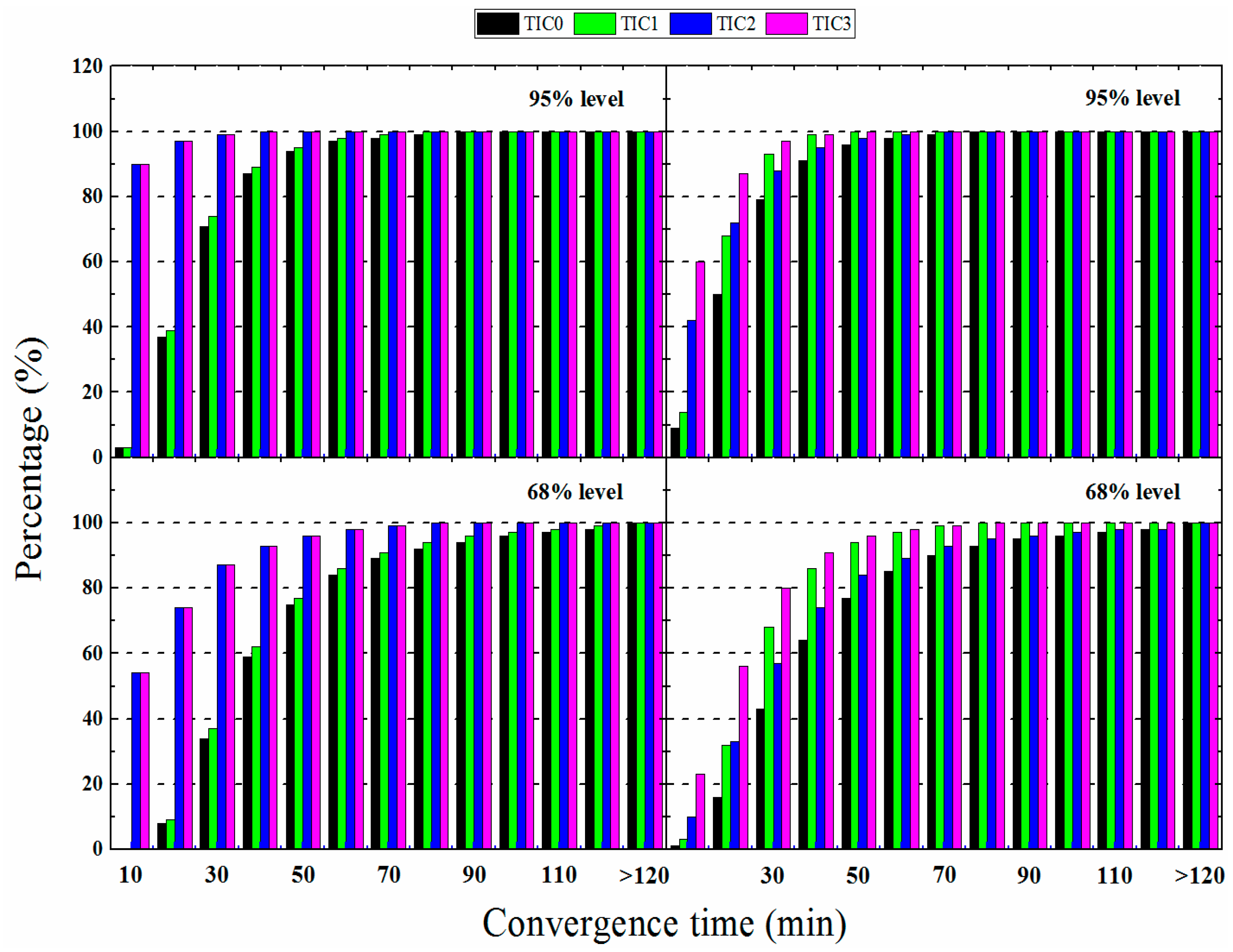
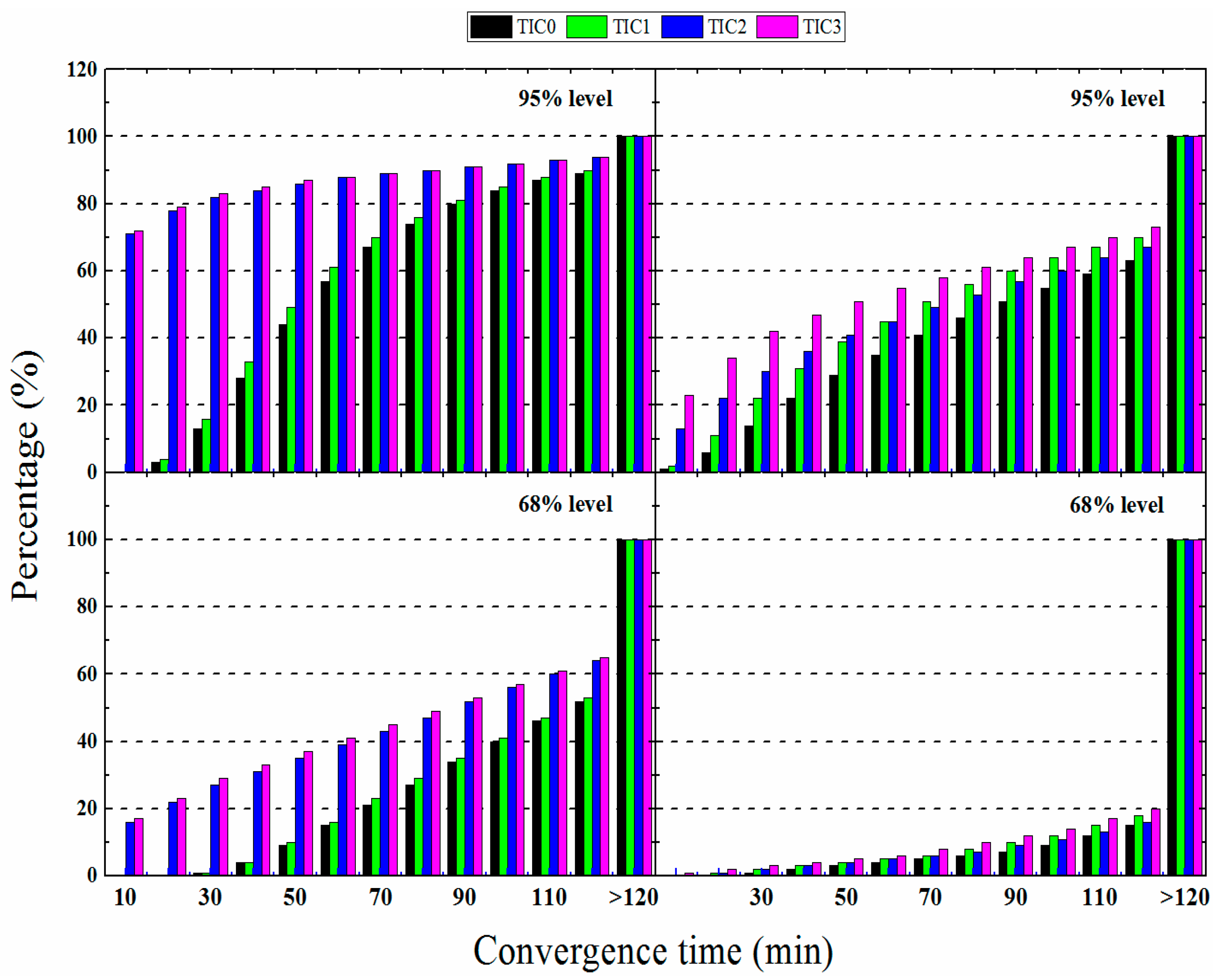
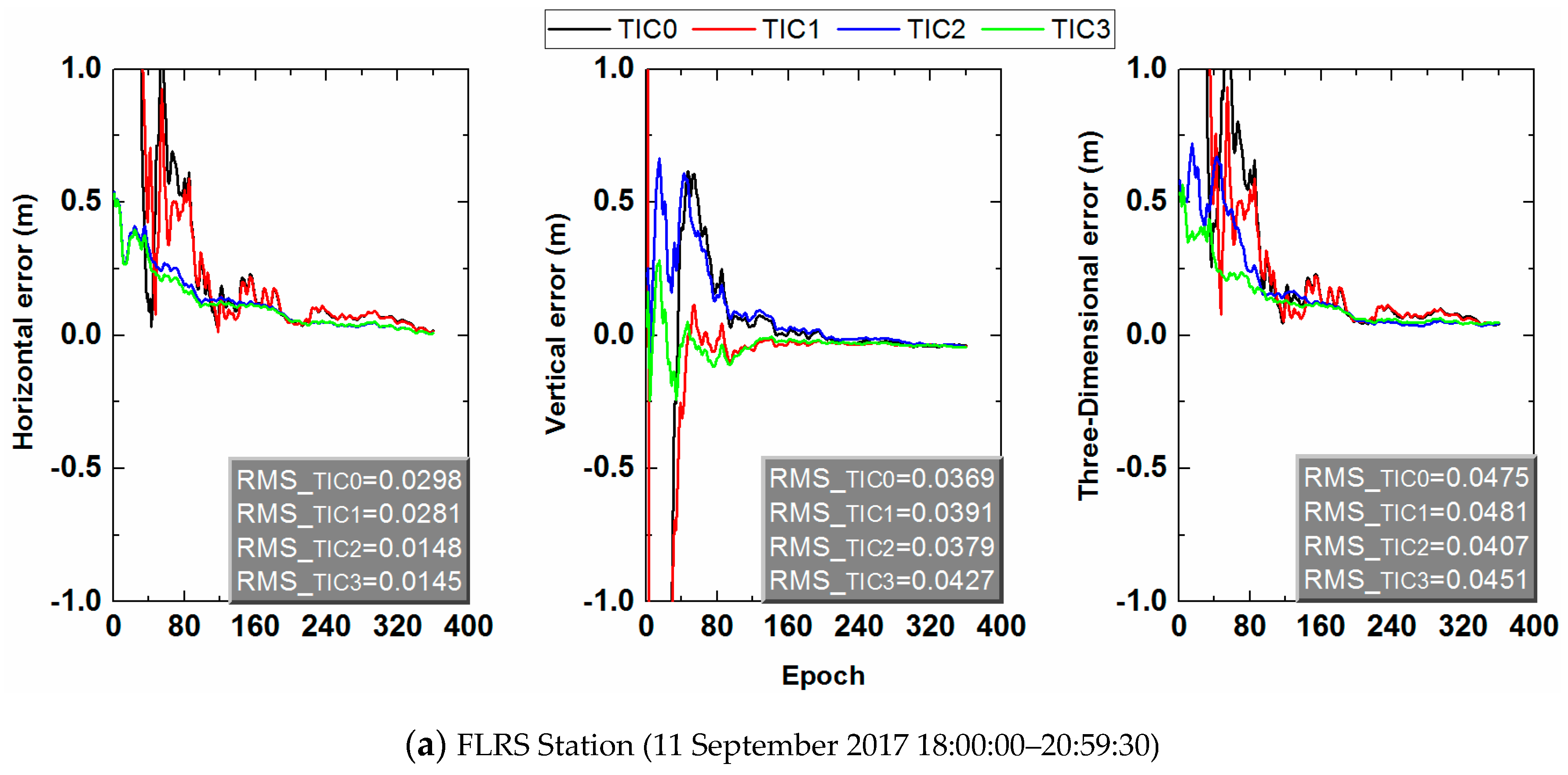
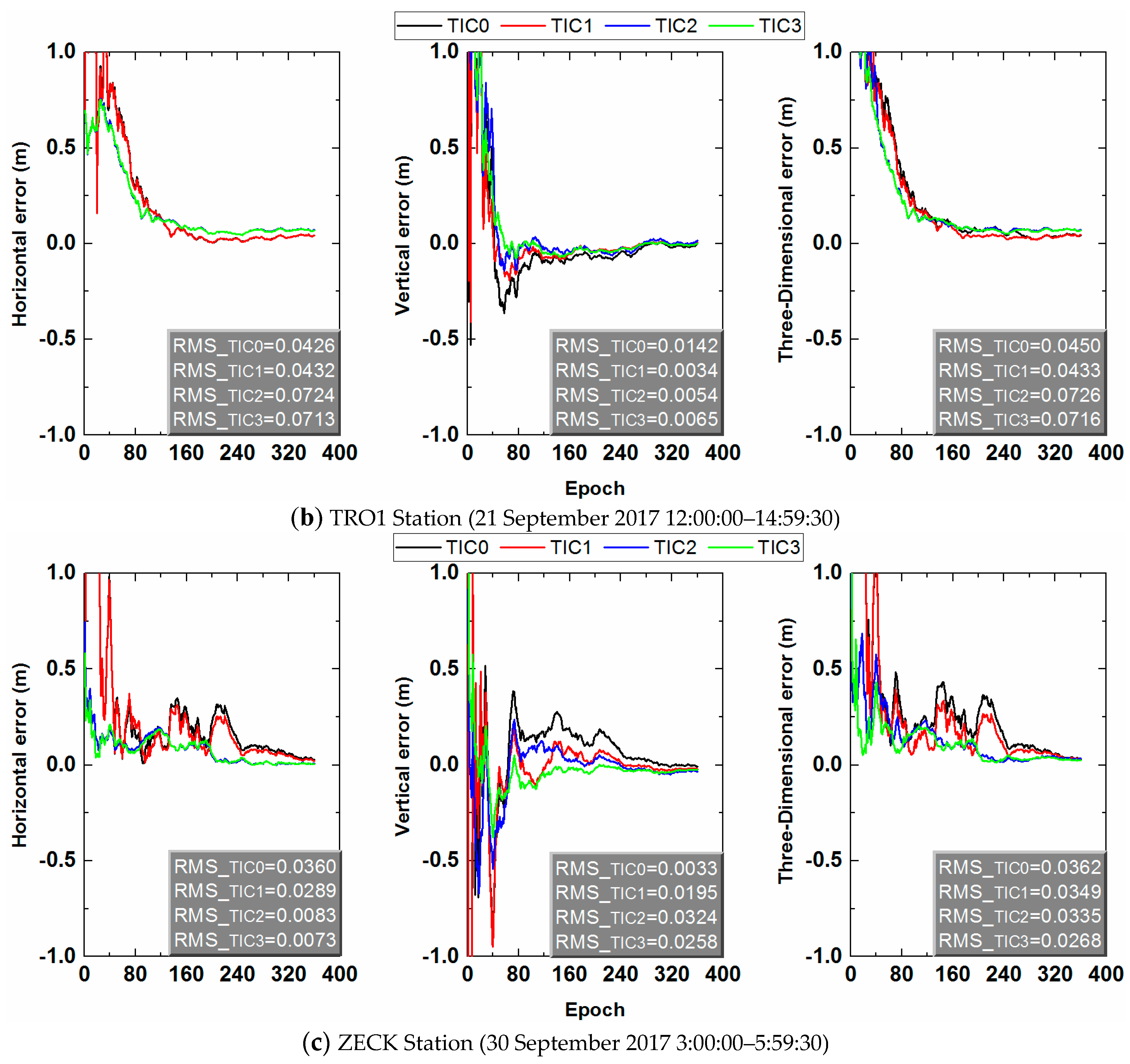
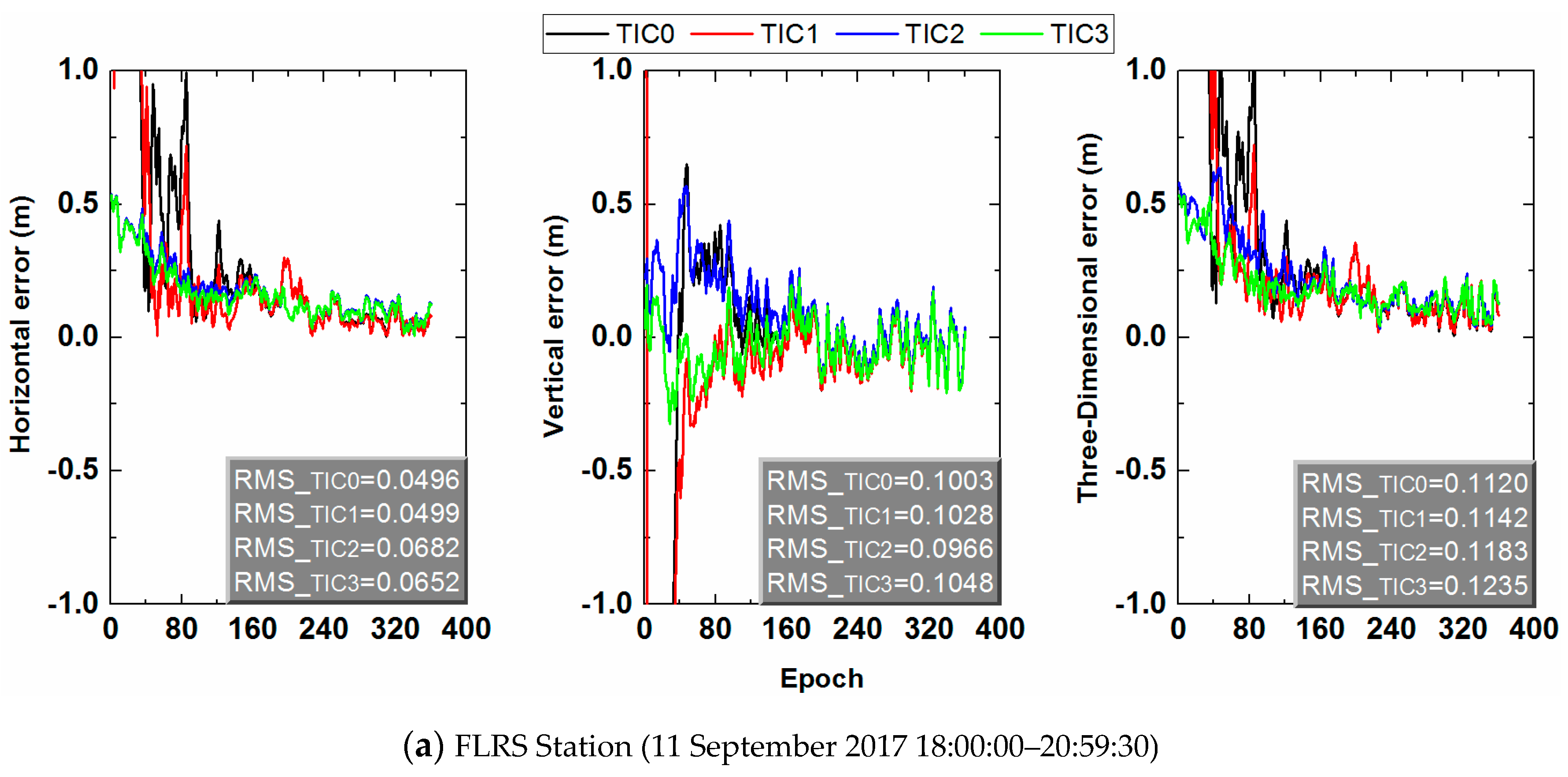
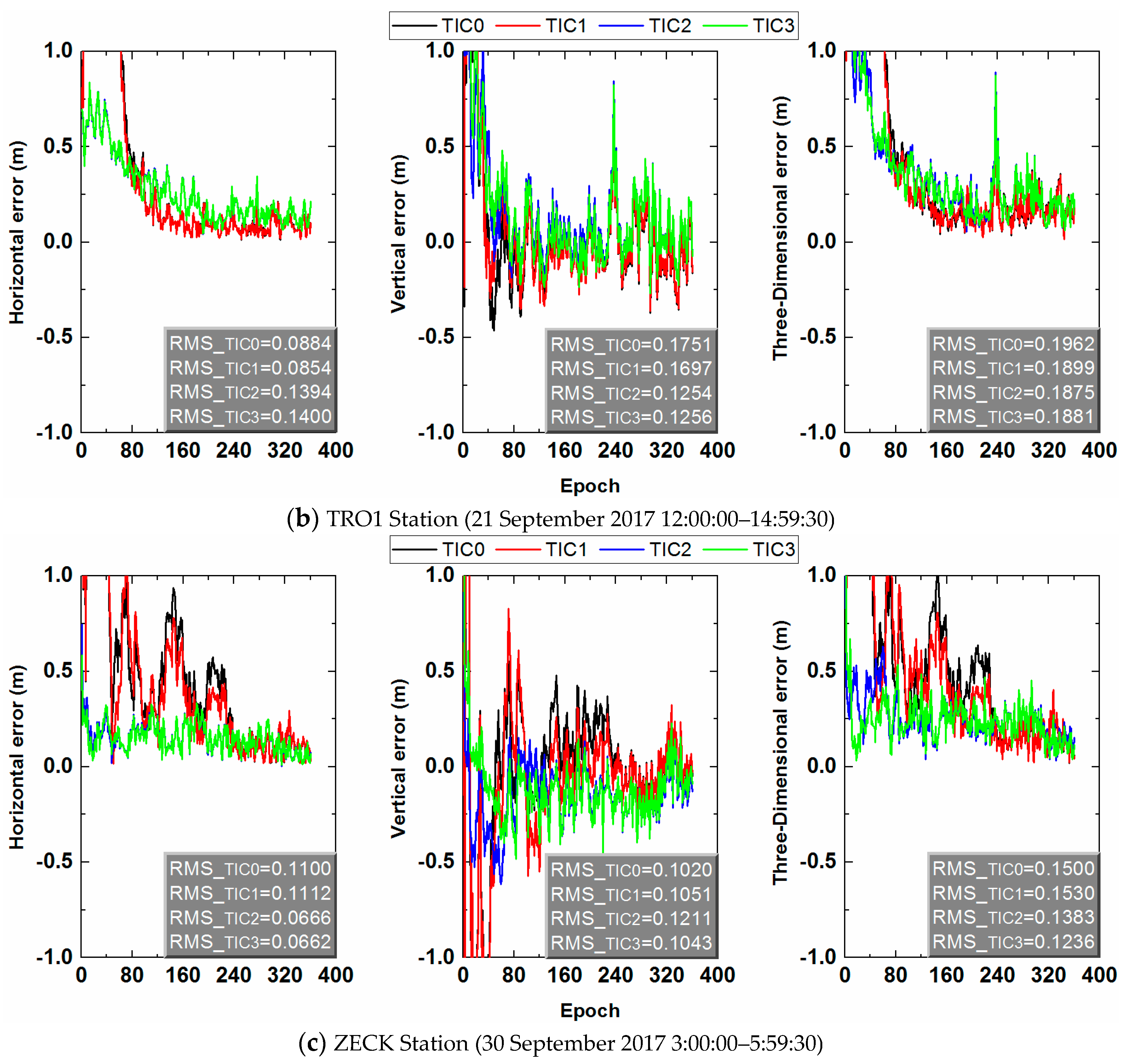
| Item. | Models/Strategies |
|---|---|
| Constellation | GPS |
| Data span | 1–30 Sep 2017 |
| Observations | GPS raw code and phase observations |
| Frequency selection | L1 |
| Sampling rate | 30 s |
| Satellite cut-off elevation | 7° |
| Positioning mode | Static/kinematic (simulated kinematic) |
| Estimator | Kalman filter |
| Satellite orbit and clock | Final by IGS orbit and clock products |
| Weighing strategy | A priori precision of 0.003 and 0.3 m for raw phase and code [35] |
| Satellite DCB | Correct using CODE Differential Code Bias (DCB) products |
| Ionospheric delay | Klobuchar model [39] (priori) or GIM products from IGS (constrains) |
| Ionospheric noise | Random walk [10] |
| Tropospheric delay | Saastamoinen model [40] (priori) or products from IGS (constrains) |
| Tide displacement | Solid Earth, pole and ocean tide were corrected [41] |
| Sagnac effect | Corrected model [42] |
| Relativistic effect | Corrected model [43] |
| Satellite and receiver antenna | Phase Center Offset (PCO) and Variations (PCVs) values from igs14.atx |
| Reference coordinates | IGS SINEX files |
| Phase ambiguities | Float values |
| Abbreviation | Item | Abbreviation | Item |
|---|---|---|---|
| NENE | Nearest-neighbor extrapolation | BILI | Bilinear interpolation |
| BICU | Bicubic interpolation | JUNK | Junkins weighted interpolation |
| Scheme | Static SF PPP (min) | Kinematic SF PPP (min) | ||||||
|---|---|---|---|---|---|---|---|---|
| H(95%) | H(68%) | V(95%) | V(68%) | H(95%) | H(68%) | V(95%) | V(68%) | |
| NENE | 3.21 | 15.10 | 17.20 | 40.60 | 18.45 | 77.34 | 78.46 | 134.10 |
| BILI | 3.14 | 14.40 | 15.18 | 32.81 | 16.10 | 73.00 | 68.95 | 131.50 |
| JUNK | 3.87 | 17.55 | 19.44 | 42.92 | 19.00 | 78.30 | 79.44 | 134.60 |
| BICU | 3.42 | 15.70 | 17.68 | 41.30 | 19.30 | 78.30 | 79.01 | 134.30 |
| Interpolation Method | Static (sec) | Kinematic (sec) |
|---|---|---|
| NENE | 6.905 | 6.821 |
| BILI | 6.550 | 6.512 |
| BICU | 6.775 | 6.797 |
| JUNK | 6.429 | 6.474 |
| Abbreviation | Item |
|---|---|
| TIC0 | Standard single-frequency PPP model |
| TIC1 | Troposphere-constrained single-frequency PPP model |
| TIC2 | Ionosphere-constrained single-frequency PPP model |
| TIC3 | Troposphere- and ionosphere-constrained single-frequency PPP model |
| Scheme | Static SF PPP (min) | Kinematic SF PPP (min) | ||||||
|---|---|---|---|---|---|---|---|---|
| H(95%) | H(68%) | V(95%) | V(68%) | H(95%) | H(68%) | V(95%) | V(68%) | |
| TIC0 | 27.17 | 42.11 | 23.21 | 39.34 | 61.63 | 103.07 | 81.84 | 134.81 |
| TIC1 | 26.07 | 40.29 | 18.17 | 27.98 | 58.99 | 100.90 | 72.28 | 131.58 |
| TIC2 | 3.15 | 14.39 | 15.18 | 32.82 | 16.06 | 73.29 | 69.01 | 131.40 |
| TIC3 | 3.04 | 14.08 | 9.57 | 21.05 | 15.70 | 71.53 | 57.41 | 127.59 |
© 2019 by the authors. Licensee MDPI, Basel, Switzerland. This article is an open access article distributed under the terms and conditions of the Creative Commons Attribution (CC BY) license (http://creativecommons.org/licenses/by/4.0/).
Share and Cite
Wang, R.; Gao, J.; Zheng, N.; Li, Z.; Yao, Y.; Zhao, L.; Wang, Y. Research on Accelerating Single-Frequency Precise Point Positioning Convergence with Atmospheric Constraint. Appl. Sci. 2019, 9, 5407. https://doi.org/10.3390/app9245407
Wang R, Gao J, Zheng N, Li Z, Yao Y, Zhao L, Wang Y. Research on Accelerating Single-Frequency Precise Point Positioning Convergence with Atmospheric Constraint. Applied Sciences. 2019; 9(24):5407. https://doi.org/10.3390/app9245407
Chicago/Turabian StyleWang, Ren, Jingxiang Gao, Nanshan Zheng, Zengke Li, Yifei Yao, Long Zhao, and Yifan Wang. 2019. "Research on Accelerating Single-Frequency Precise Point Positioning Convergence with Atmospheric Constraint" Applied Sciences 9, no. 24: 5407. https://doi.org/10.3390/app9245407
APA StyleWang, R., Gao, J., Zheng, N., Li, Z., Yao, Y., Zhao, L., & Wang, Y. (2019). Research on Accelerating Single-Frequency Precise Point Positioning Convergence with Atmospheric Constraint. Applied Sciences, 9(24), 5407. https://doi.org/10.3390/app9245407





